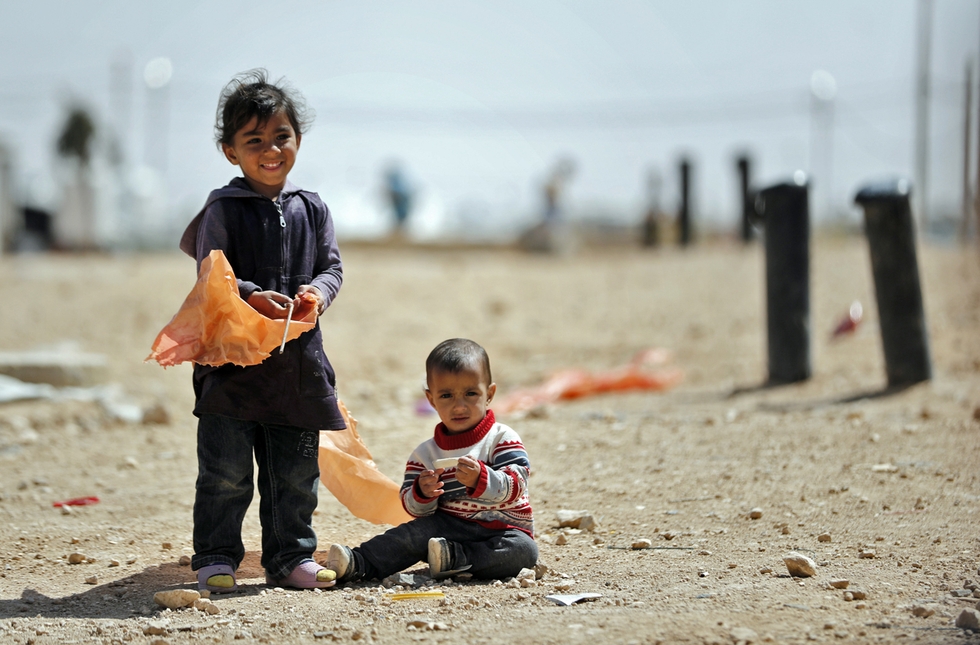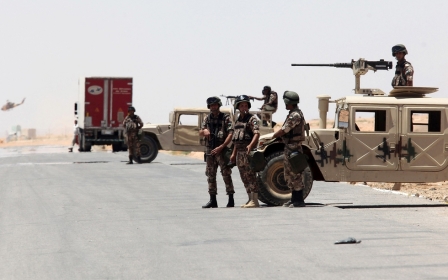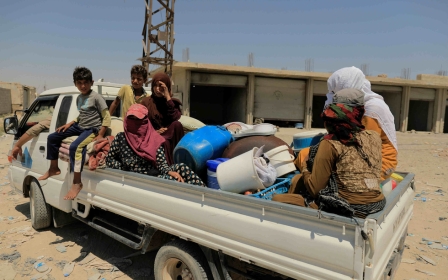Climate change, refugees worsen Jordan's water woes: Scientists

By Chris Arsenault
Hot, dry Jordan faces severe water shortages due to climate change and a refugee influx from neighbouring Syria, Stanford University scientists said in a study published on Wednesday.
In a scenario where greenhouse gas emissions continue at their current pace, Jordan is expected to experience a one-third drop in annual winter rainfall, alongside a 4.5 degree Celsius rise in average annual temperatures by 2100, said the study.
Droughts will increase in frequency, duration and intensity compared to the three decades before 2010, it added, suggesting that water stress is likely to exacerbate social tensions.
"Jordan is currently one of the most water-poor countries in the world," said Stanford professor Steven Gorelick, one of the study's authors.
"Beyond 2100, in the absence of additional fresh water supplies - a likely scenario is... groundwater is depleted, agriculture depends solely on treated waste water and rapid population growth through future adoption of refugees becomes an enormous challenge," he told the Thomson Reuters Foundation.
The Jordanian government says the country is now home to 1.4 million Syrians, of whom more than 660,000 are registered with the UN refugee agency, UNHCR.
More than 330,000 people have been killed in Syria's war, and millions have been displaced since it began in 2011.
Jordan today has an average annual water supply of 150 cubic metres per capita. The United Nations says countries with less than 500 cubic metres per person face "absolute scarcity".
Along with more thirsty mouths due to the arrival of refugees in Jordan, the conflict in Syria has disrupted water management infrastructure in the Yarmouk-Jordan River system.
Flow in the river is expected to decrease by up to 75 percent by 2050 compared to its historical average, as a result of human and natural influences in Syria, the study said.
The number of droughts in Jordan and their duration are expected to double between 2071 and 2100, causing a "huge problem," it said.
Jordan's government is working to crack down on water theft from pipelines, while improving water management infrastructure, Gorelick said.
Amman, the capital, recycles the vast majority of its waste water and uses this treated water for irrigation, he said.
The country is also moving ahead with new pipelines for groundwater and projects to desalinate water from the Red Sea.
Despite these attempts to improve the situation, the "long-term physical constraints on supply are likely to get much worse," Gorelick warned.
Stay informed with MEE's newsletters
Sign up to get the latest alerts, insights and analysis, starting with Turkey Unpacked
Middle East Eye delivers independent and unrivalled coverage and analysis of the Middle East, North Africa and beyond. To learn more about republishing this content and the associated fees, please fill out this form. More about MEE can be found here.




